A Revitalized RPG
Summary
On Ascension, every single creature is re-designed and expanded to have unique stats, strengths, weaknesses, resistances, and vulnerabilities to go deeper on the RPG elements of the world.
Different creatures have different base stats: (Strength, Agility, Attack Power, Critical Strike, Dodge, Block, Haste, Armor Pen, etc.), different strengths (faster attack speed, extra damage), weaknesses (lower health, lower armor, etc.) resistances (e.g. fire elementals take less damage from Fire Spells) and vulnerabilities (e.g. fire elementals take more damage from Frost Spells).
This makes every creature in Azeroth unique and different to fight, and allows you to make different decisions between encounters to maximize your potential and add gameplay depth. Different creatures mean meaningful differences between classes and characters, making your choices matter. Fighting a kobold (high dodge, low damage, fast attack) is going to feel different than fighting a Scarlet Crusader (low dodge, high armor, can block attacks), AND it will feel even more different depending on the class you’re playing (a mage fighting a kobold will have to deal with spell pushback from the kobold’s fast attacks, whereas a mage fighting a Scarlet Crusader doesn’t have to worry about their high block chance–but a Rogue does).
Having a wide variety of different creature encounters means that YOU get to make different decisions between encounters to maximize your potential. This adds real depth and dimension to gameplay. The result is a diverse, shifting META that changes on every encounter and every pull: every class has a place where it can outshine all others, and every class has skills to help mitigate areas where they are weaker.
All of it comes together in a dynamic, varied, and exciting Azeroth for you to challenge.
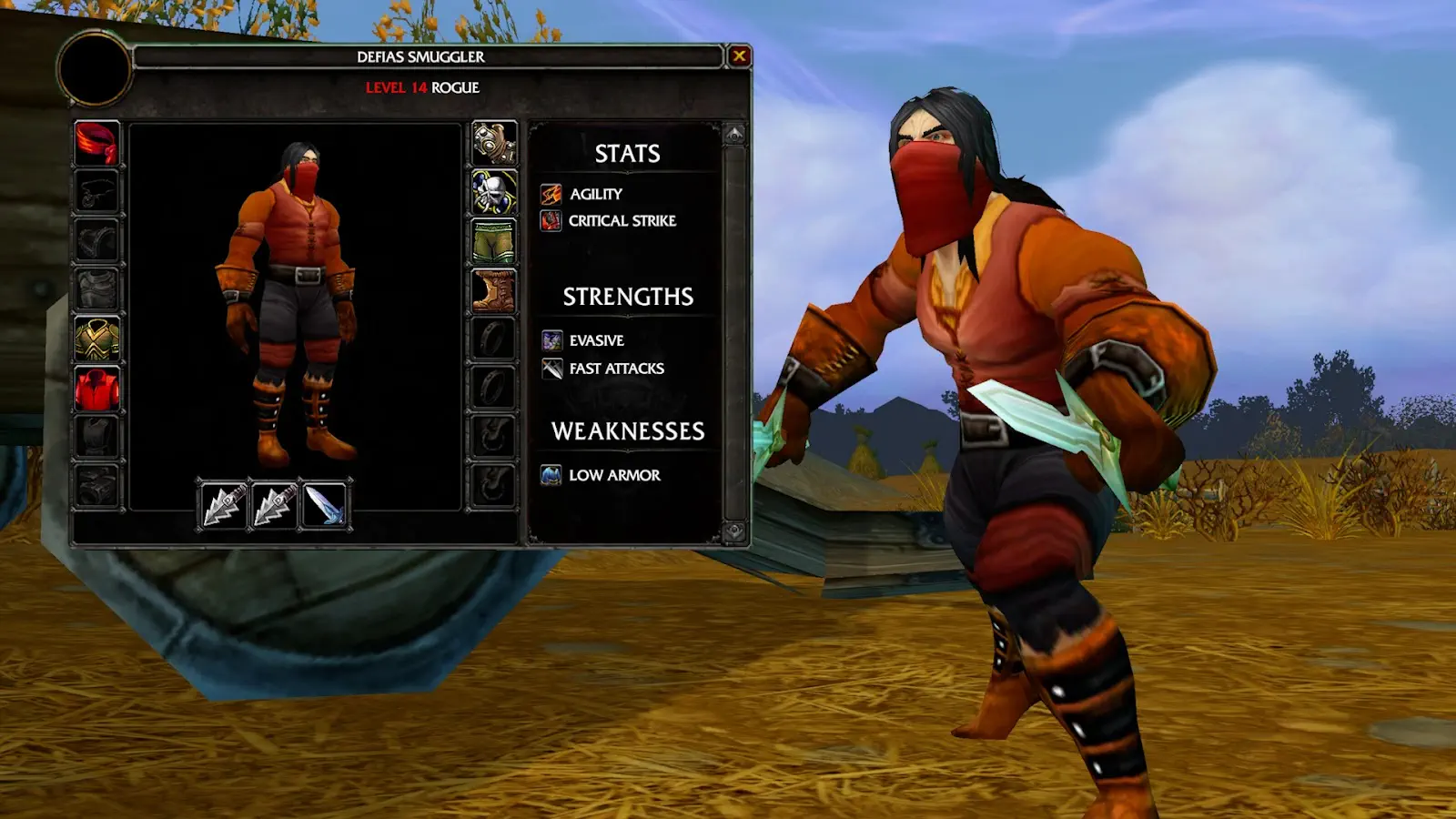
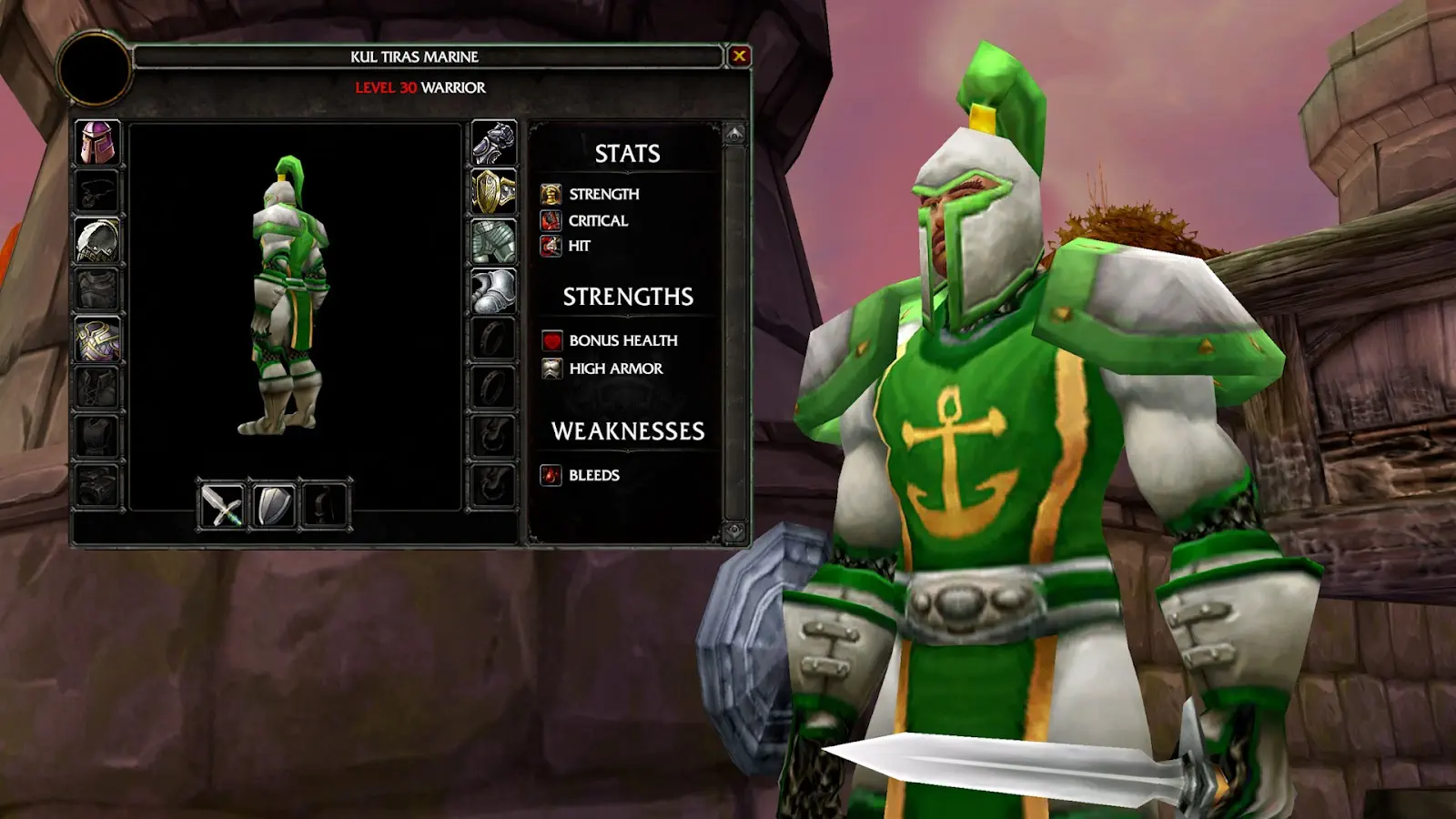
In-Depth Overview
When you step into an RPG, you want the choices you make to impact how you face the world: if you choose to play a Warrior, you know you’re going to dominate in melee range with high health, high armor, and high attack–but you also know that you’re going to be weaker against ranged enemies or spellcasters that you can’t get to.
Having clear, defined strengths and weaknesses are what make your decisions matter. But for them to mean something, you need to encounter a vast world filled with thousands of different creatures to challenge. Luckily, on Warcraft Reborn you will:
- All 2,390 creatures throughout Azeroth have been re-designed with unique stat profiles and “creature classes” that influence their combat behavior
- Different Stats, Strengths, Weaknesses, Resistances, and Vulnerabilities for every creature in the game
- These make every single creature different and feel different to fight
- From different health and armor values to different attack speeds, stats, and weaknesses
You can tell what a creature’s strengths and weaknesses are by looking at them: what a monster looks like will tell you a lot about how dangerous it is and how you should approach it. For example, if you see an enemy carrying a shield or wearing a heavy plate, expect a higher armor value and the ability to block attacks. You’ll have a harder time hurting them head-on, and an EASIER TIME using Bleeds, Spells, or Armor Penetration to take them down. In contrast, an enemy wearing light clothing with no shield likely has less armor, making it easier to damage physically. But might hit faster and maybe even deal more damage.
These strengths and weaknesses are the soul of an RPG: the more unique situations the world has to offer you, the more you can use your skills, spells, and tools to overcome different challenges.
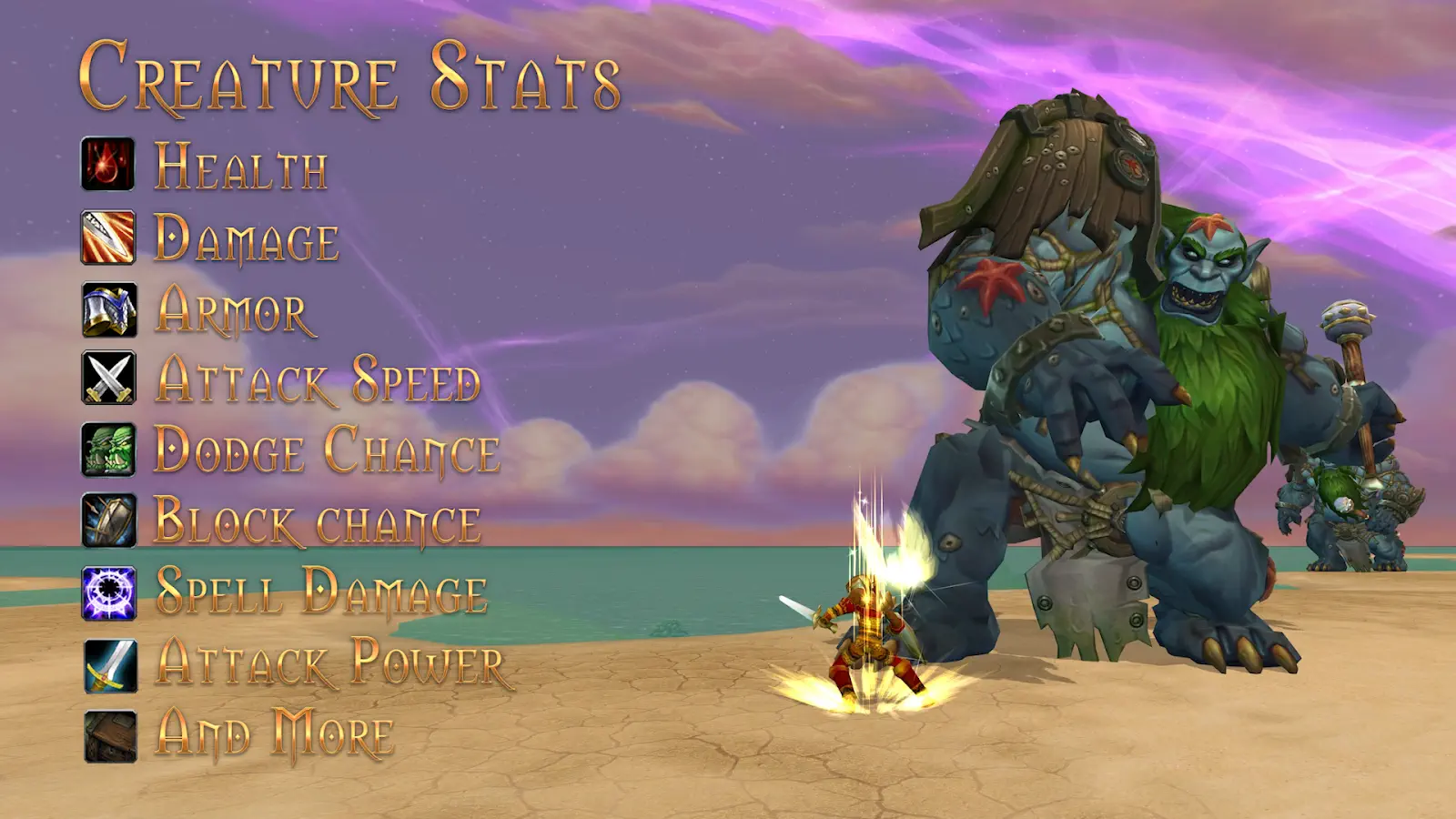
By making every creature in Azeroth different, YOU will have a more varied adventure where your strengths and weaknesses actually come up: as a rogue, you might be easily able to assassinate a Defias Mage, but have trouble and deal less damage to a heavily armored Scarlet Crusader. This gives you the opportunity to use different skills like Rupture or Expose Armor to overcome that unique weakness and exploit a foe.
The RPG Creature Overhaul makes every single creature in Azeroth different by outfitting them with unique Creature Classes, and by making their equipment alter their stats.
Creature Classes
Every creature in Azeroth has a creature class, which determines their base stats:
- Warrior-type creatures are the default, baseline creature-class: they deal average damage, and have average armor, with both modified by the equipment they’re wearing.
- Rogue-type creatures have higher baseline critical strike chance, slightly faster attack speed, but lower armor, making them fragile if you can withstand their burst.
- Hunter-type creatures have high ranged attack power, making them dangerous from afar. But they also have lower armor than usual, meaning you can get in close to take them down.
- Caster-type creatures cast spells and deal high spell damage, but generally have the lowest armor, making them weak at close range
- Hybrid-type creatures have a combination of Caster and Warrior-type stats, and will use a combination of sword AND spell.
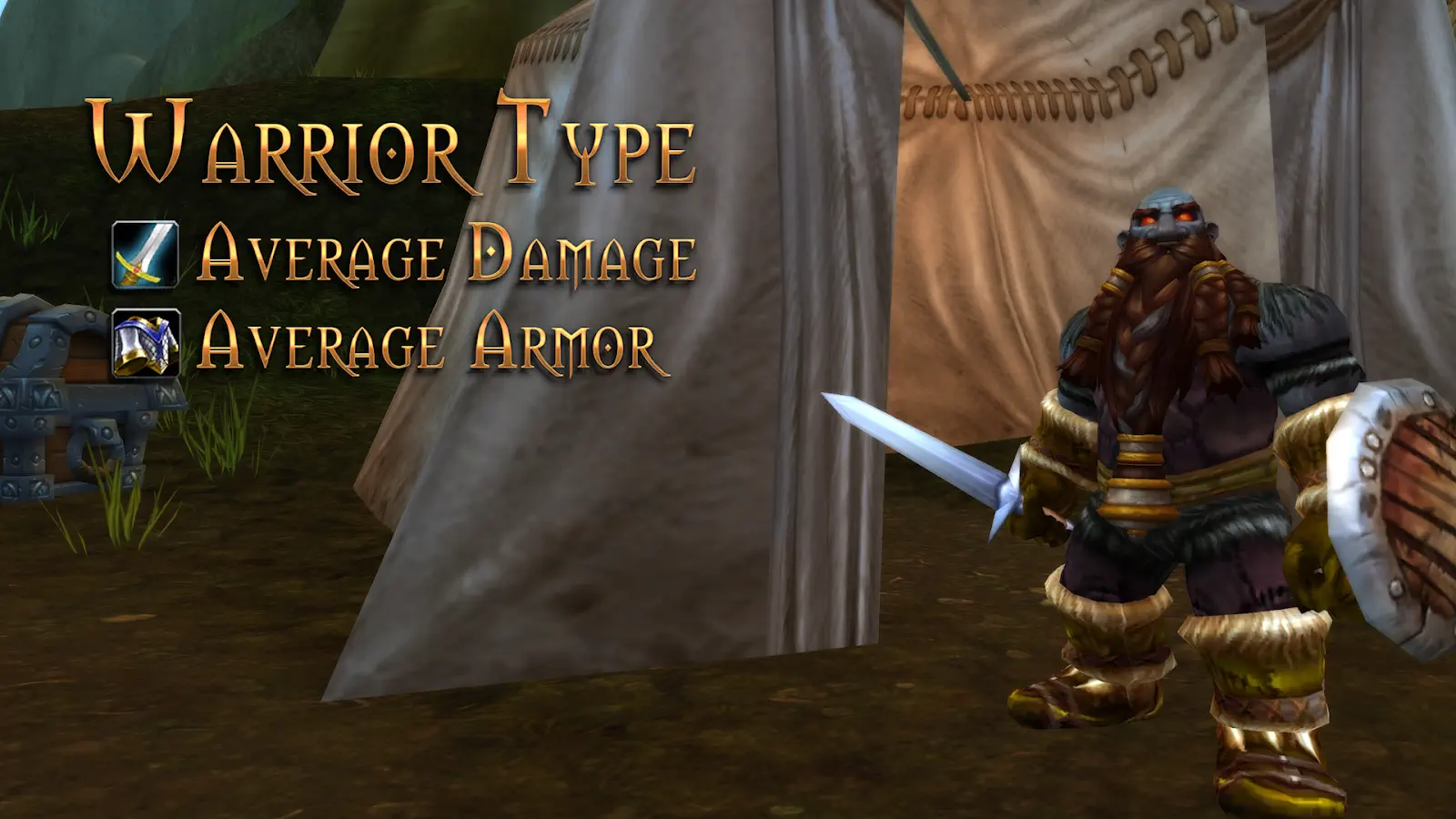
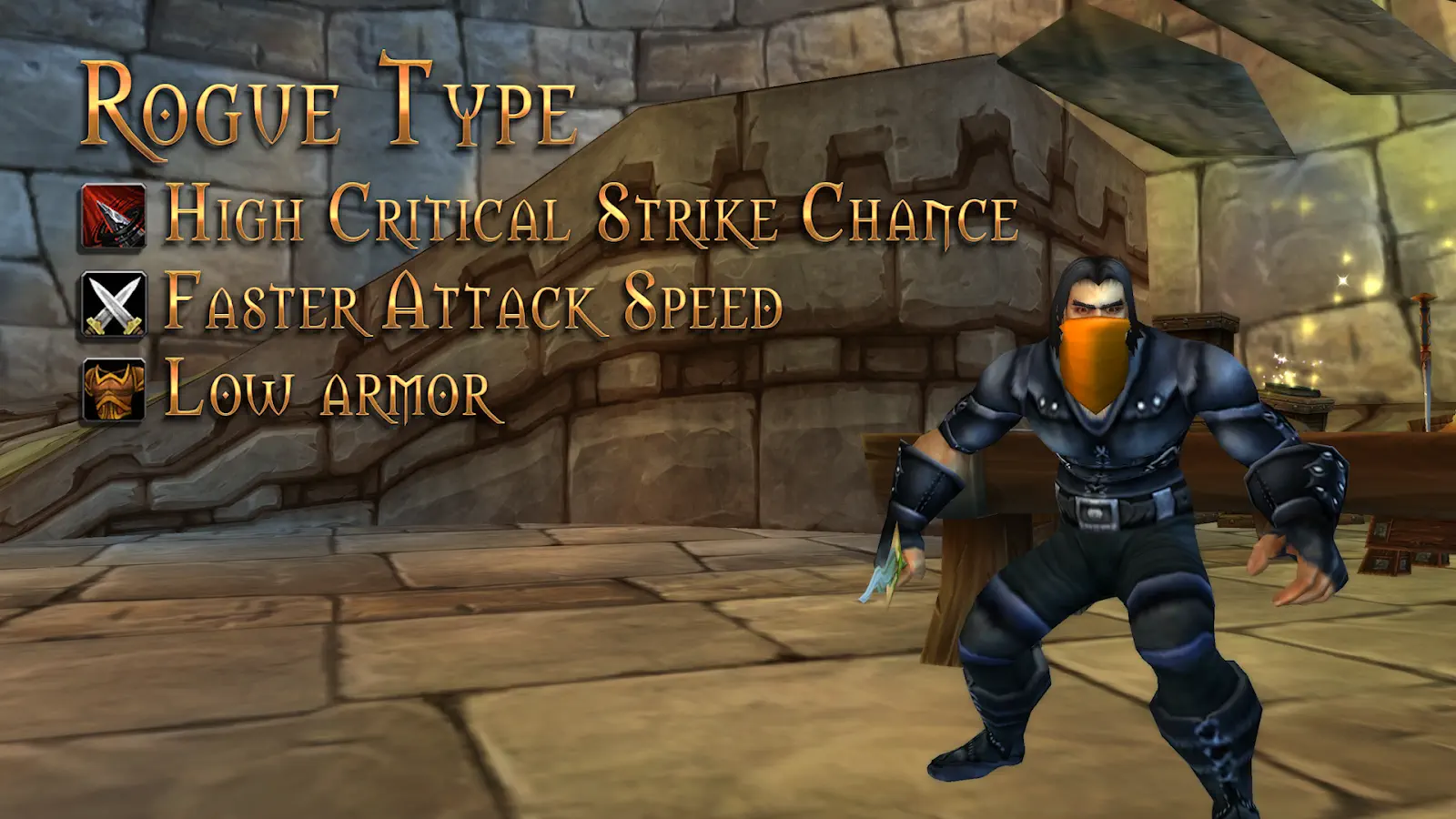
Creature Equipment
The actual physical equipment that the creature is wearing modifies their stats from the base creature class AND gives new stats. For example:
- A Caster-type creature wearing plate shoulders will have more armor than a caster-type creature in full cloth
- A Warrior-type creature with a shield will have more armor than one without, and will have the ability to block attacks, along with higher Block Chance and Block Amount
- A Rogue-type creature with a sword will have additional attack power, whereas a rogue-type creature with a dagger will deal less damage, but have a faster attack speed and higher critical strike
- A hunter-type creature with a gun might have a slower attack speed but more attack power, whereas a hunter-type creature with a bow might have a faster attack speed but deal less damage per shot
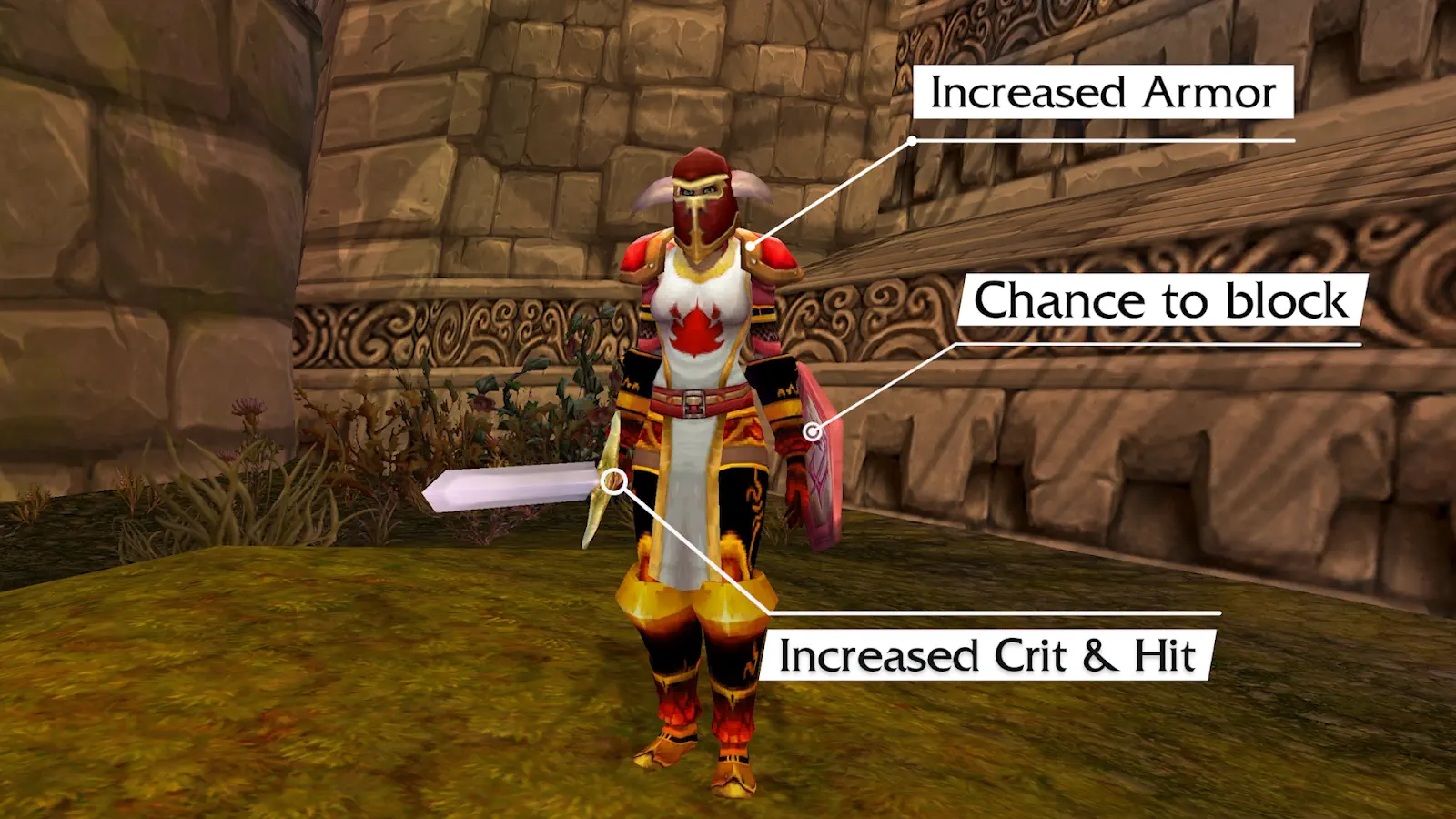
The principle here is simple: if you can see unique aspects of a creature (like the armor they’re wearing, their size, or their weapons), it should MATTER. Between a creature’s class and their equipment, you can tell a lot about them:
- An Ogre with a 2h-Axe will be a slow-attacking brute that deals big damage, but has no armor–your attacks will cut through like butter
- A Scarlet Knight with a dagger and shield will be able to block your attacks and pierce your armor, but will deal less damage per attack
- A Defias Bandit might not do much damage with their dagger, but they’ll have a fast attack speed and high critical strike, making them lethal to lightly-armored classes
- A jungle Panther might have a high chance to dodge and fast claw attacks–totally different than a Gorilla which might have slower attacks but high health
- A Cliffwalker stone giant in Azshara will have very slow attacks that HURT, and have a ton of armor since he’s made of stone
Resistances and Vulnerabilities
In addition, creatures now have vulnerabilities and resistances to elements depending on the creature, increasing the depth of how you can confront them. Resistances apply to obvious scenarios like Fire Elementals having increased resistances to Fire spells. They also apply in more niche situations, like spellcasters having some resistance to the spells they use (i.e. Cultists in Silithus have Shadow Resistance, Dark Iron Dwarves have Fire Resistance).
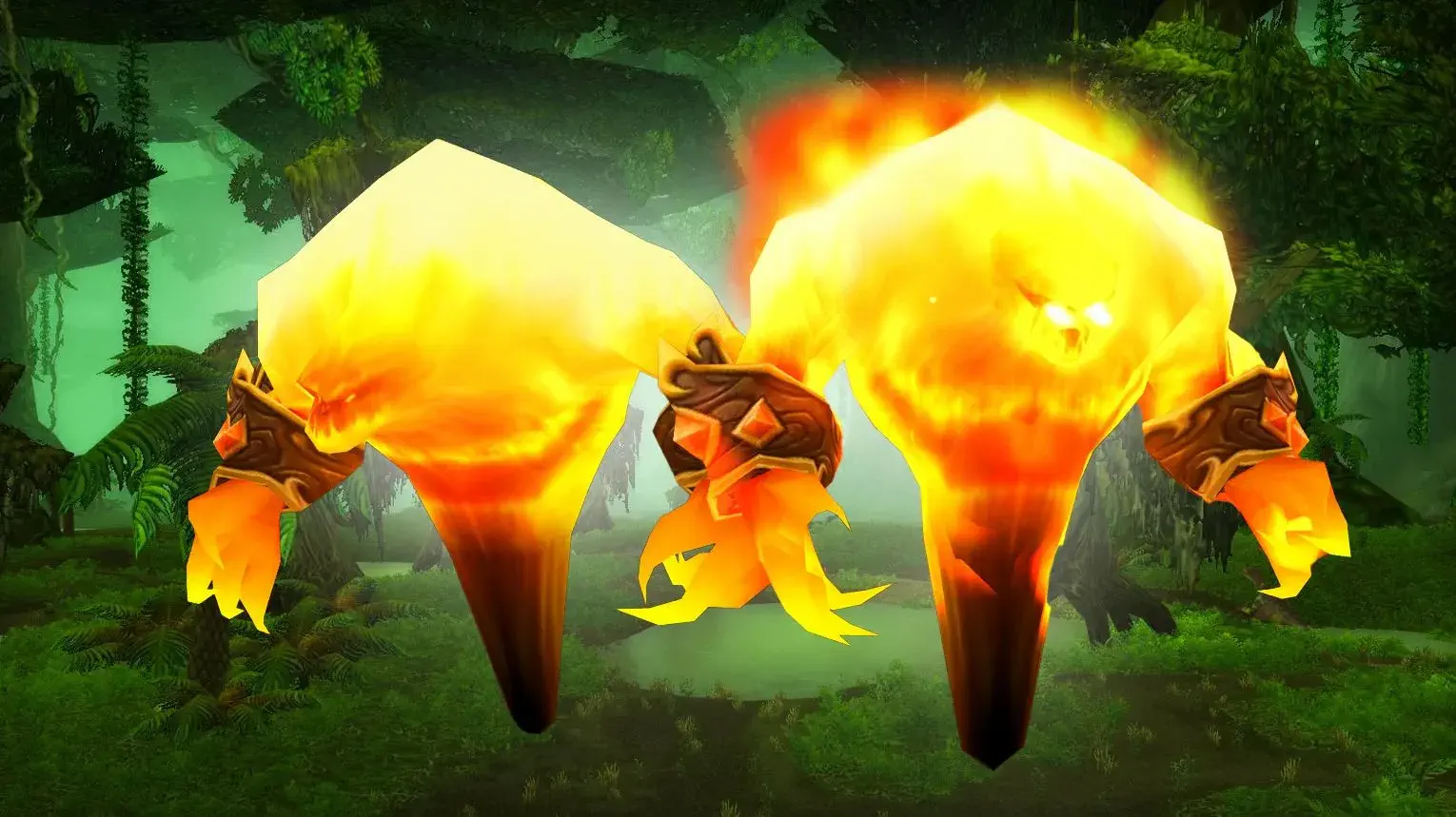
Creatures also now have vulnerabilities: that Fire Elemental and Dark Iron Dwarf won’t JUST have resistance to Fire spells, but also be vulnerable to Frost spells, taking increased damage from spells like Frostbolt, Frost Shock, and Frostbrand Weapon. This doubles down on the RPG elements that make the game great.
Here’s how they work:
Full Resists (Binary Resists)
- Crowd Control spells can now be FULLY resisted: both YOU and CREATURES now have a chance to completely resist spells like Counterspell, Wind Shear, Polymorph, Fear, etc.
- Spells with a damaging component can NOT be fully resisted
- That fire elemental will never just FULL RESIST your Fireball: it will always take SOME damage, but that damage will be reduced
- This gives you the option to get Spell Penetration to OVERCOME creatures resistances, making this stat uniquely powerful in unique situations
Additional Spell Penetration functionality:
- Previously, creatures had a “level based resistance”: if they were a higher level than you, they had a higher chance to resist your spells. This could previously NEVER be bypassed, even with lots of Spell Penetration.
- Now: With enough Spell Penetration, you can bypass a creature’s resistances to deal full damage!
- This means that Spell Penetration always has some value in PvE content
- AND: For creatures that you would expect to need to use Spell Penetration against, it will be very good
- This change makes Spell Penetration universally appealing all the time, and also GREAT when you really need it.
Vulnerabilities
- Creatures that should CLEARLY be vulnerable to a spell school, for example a Fire Elemental being weak to a Frostbolt, will take increased damage from that school
- This additionally extends into places that aren’t immediately obvious, but that make sense: for example, a Water Elemental will take additional damage from Lightning Bolt and Chain Lightning
- This expands on the Blizzlike Resistance System to make it cool as hell
Vulnerabilities and Resistances in Raids
Vulnerabilities and Resistances are receiving additional care when it comes to Raiding to make sure they have a positive impact. Different bosses will have different resistances and vulnerabilities to create an ecosystem where certain classes shine in different scenarios. Certain classes and specializations will have a DISTINCT advantage in certain fights.
For example, a Frost Mage is going to deal additional damage to a fire elemental like Baron Geddon or Ragnaros, creating a fight where Frost Mages in particular can really shine. Similarly, a Fire Mage or even a Flametongue-wielding Enhancement Shaman will have a unique advantage against Sapphiron or Kel’thuzad, since these creatures are frost-based. In either scenario, you’ll be able to pick up Spell Penetration to mitigate your weaknesses to ensure you can still play the way you want and deal full damage.
This helps create a diverse meta where the best class and spec will change based on the scenario. It’s not just a matter of “best DPS is best in every single fight”, there is nuance and specifics that you would expect of an RPG. On Ascension, every single class and spec has a place where their particular set of skills can shine.
Conclusion
In a nutshell, what you see on the monster visually now directly translates to gameplay. This recaptures the magic of an RPG: every encounter you face is a bit different, and that means meaningful differences between classes and characters, making your choices matter. The ability to make different decisions between encounters to maximize your potential adds real depth and dimension to gameplay, and the result is a diverse, shifting META that changes on every encounter and every pull. All of it comes together in a dynamic, varied, and exciting Azeroth for you to challenge.
Now, every single one of the Original 9 Classes and every single spec has a place where it can shine: where you will be stronger than your allies and uniquely capable of dealing with challenges. You now have opportunities to take advantage of enemies weaknesses by using spells you otherwise would have never used
- As a Rogue you may use expose armor and lean more on bleeds on the creature with a shield
- As a Hunter, you might opt to use Arcane Shot on an armored creature since it uses magical damage
- As a Mage you’ll probably try and use Frostbolt to take down that fire elemental
This is the beginning of creating a much more dynamic meta, where just because someone topped the meter on one encounter doesn’t mean they will on the next.
https://project-ascension.fandom.com/wiki/RPG_Overhaul